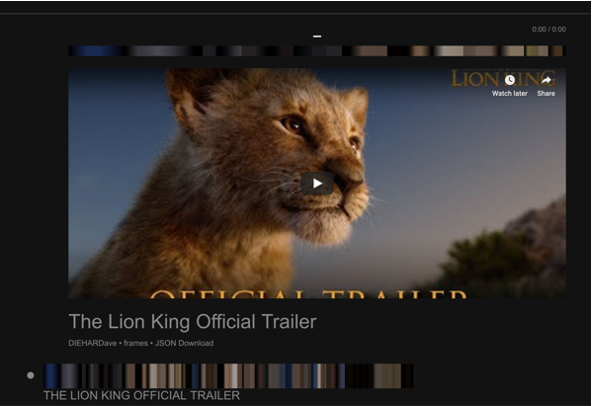UA Little Rock researchers earn Best Paper Award for research using moviebarcode as video analysis method

A group of researchers from the University of Arkansas at Little Rock Collaboratorium for Social Media and Online Behavioral Studies (COSMOS) have been recognized for their research using moviebarcode, a technique used to summarize videos by compressing an entire video into a single image, to systematically categorize and analyze videos on YouTube.
COSMOS researchers earned the “Best Paper Award” for their submission, “YouTube Video Categorization Using Moviebarcode,” at the International Academy, Research, and Industry Association (IARIA) Conference on Human and Social Analytics held in Porto, Portugal.
The paper was written by Recep Erol, Rick Rejeleene, and Thomas Marcoux, doctoral students in computer and information science at UA Little Rock, Richard Young, a UA Little Rock graduate, Dr. Muhammad Nihal Hussain, post-doctoral researcher at COSMOS, and Dr. Nitin Agarwal, Jerry L. Maulden-Entergy endowed chair and distinguished professor of information science and director of COSMOS.
“Moviebarcodes are typically used to visualize a summary of videos,” said Erol, the lead author. “However, we used the color theory computationally so that we can categorize videos using this technology. This technique compresses a video into an image, then it summarizes the video. The computation time is very small compared to other deep learning-based algorithms.”
Having a tool that allows a quicker method to analyze videos without watching them is important for researchers who study online videos. YouTube, for example, is a popular source of videos for researchers. Approximately one billion hours of video are added to YouTube daily.
“Cosmographers have a knack of thinking out of the box and producing groundbreaking innovations,” Dr. Agarwal said. “Moviebarcode-based video data analysis is one such idea with numerous applications that COSMOS is developing including faster and efficient search and retrieval, computationally extracting noteworthy narrative elements in videos, identifying coordinated influence campaigns, among others.”
The research idea stemmed from a project Young worked on during the spring 2019 Social Computing course offered by Dr. Agarwal.
“What I find interesting about moviebarcodes is that hours of video content can be quickly digested by a user in a single glance,” Young stated. “After researching moviebarcodes further, I began considering possible applications to my work with COSMOS proposing the development of a moviebarcodes tool that can effectively visualize video data and provide impactful insights.”
Each barcode consists of generated colors for every frame of the movie making it unique. All frames combined into one code showed color transition within videos and allowed for a comparison with other videos as well as a highly accurate grouping of videos without having to watch them.
The team was also able to reduce time and computing energy required to categorize videos by creating video collections and then categorizing videos using a clustering method.
“This is a big advantage on video processing. By just looking at moviebarcodes, one can easily find what kind of video it is,” Erol said. “Nowadays, deep learning-based algorithms and tools are used for similar purposes. However, video processing requires a huge amount of GPU computation power and resources. Not all researchers may have access to these resources. With our research, we try to minimize computing requirements for large scale video processing and make this tool available for all users.”
The COSMOS team is already exploring how moviebarcode can be used for different research applications.
“We are using the moviebarcode technique for different research areas including information retrieval, optimization of recommendation engines, video categorization, and video characterization,” Erol said. “As part of my Ph.D. research, I am developing another tool, specifically for YouTube video characterization, YouTube video search, and scalable YouTube video categorization to make social computing researchers’ lives easier.”
This research is funded in part by the U.S. Air Force Research Lab, U.S. Office of Naval Research, U.S. Army Research Office, U.S. Defense Advanced Research Projects Agency, U.S. National Science Foundation, Arkansas Research Alliance, and the Jerry L. Maulden/Entergy Endowment at the University of Arkansas at Little Rock. Any opinions, findings, and conclusions or recommendations expressed in this material are those of the authors and do not necessarily reflect the views of the funding organizations. The researchers gratefully acknowledge the support.
